If you’ve ever been captivated by the call of the wild, you know that nature’s beauty and challenges go hand in hand. Our new guide is all about embracing the elements and mastering the art of extreme weather survival during your hikes.
Whether you’re facing scorching heat or bone-chilling cold, we’ve got you covered with essential tips and tricks that will keep you safe, comfortable, and ready to conquer the trails. It’s time to take your hiking game to the next level and become a true all-weather explorer.
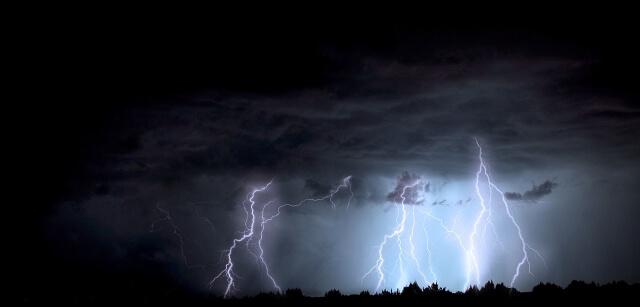
Are you ready to brave the heat waves and dance with frosty winds? Let’s dive in and unlock the secrets of thriving in the most extreme conditions Mother Nature can throw your way!
Dangers of Extreme Weather
While hiking in extreme weather can be exhilarating, it’s crucial to respect the potential dangers that come with it. Both scorching heat and bitter cold have their unique hazards that can catch even the most experienced hikers off guard.
In blistering heat, the risk of dehydration and heatstroke looms large, draining your energy and affecting your judgment. On the flip side, frigid temperatures can lead to frostbite and hypothermia, sneaking up on you when you least expect it. These dangers are real, but with the right knowledge and preparation, you can venture confidently into the wild and tackle any weather head-on.
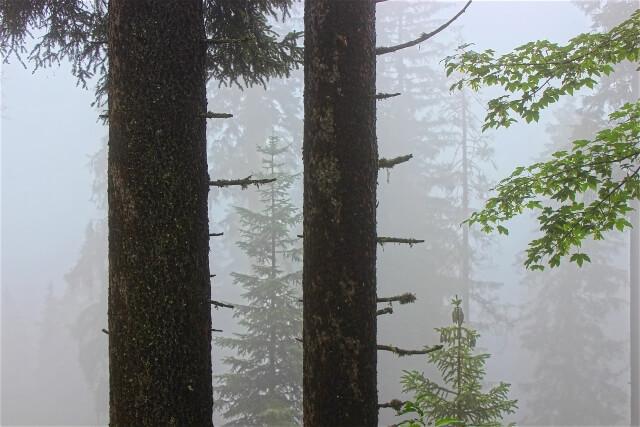
Our guide is your ultimate companion, offering valuable insights on how to navigate these challenges and emerge unscathed, so you can fully embrace the raw beauty of the great outdoors, no matter what conditions you face.
Tips for Hiking in the Heat and Cold
Research the Weather Forecast
Before you lace up your boots and hit the trails in scorching heat or bone-chilling cold, one of the most critical steps is to research the weather forecast for your hiking destination. Think of it as checking the map before embarking on a new adventure. Understanding the expected temperature fluctuations, wind conditions, and possible precipitation can help you pack the right gear and make informed decisions.
In hot weather, you’ll want to know if there’s a heatwave on the horizon or if cooler mornings and evenings are your best bet. When it’s cold, being aware of dropping temperatures or potential snowfall can influence your route and timing. By arming yourself with this knowledge, you’re like a savvy explorer who studies the terrain before setting foot on new ground.

So, before you head out, take a few moments to consult the weather forecast – your ultimate guide to conquering the extremes and ensuring a safe and enjoyable hike.
Plan and Pack for the Hike
Planning and packing for a hike in extreme weather is like preparing for a grand expedition. Start by choosing the right clothing layers and gear, tailored to the specific conditions you’ll face. Think of it as assembling the tools of your trade for an epic adventure. In scorching heat, lightweight, moisture-wicking clothing is your shield against sweat and overheating.
The cold, insulating layers and waterproof outerwear are your fortress against frigid winds and icy precipitation. Don’t forget essentials like sun protection and hydration solutions in the heat, or extra insulation and hand warmers in the cold. It’s like packing the essentials for a theatrical performance – each item has a crucial role to play.

By meticulously planning and packing, you’re setting the stage for a successful and comfortable hike, ensuring that you’re well-equipped to tackle the challenges of extreme weather head-on and make the most of your outdoor adventure.
Recognize Early Signs of Weather-Related Issues
Being able to recognize early signs of weather-related issues is like having a sixth sense that keeps you one step ahead of potential dangers. In scorching heat, watch for symptoms of dehydration, like excessive thirst and dark urine, signaling a need for more water breaks. It’s like tuning in to your body’s messages, ensuring you stay properly hydrated.

In cold conditions, pay attention to shivering, numbness, or disorientation – these could indicate the onset of hypothermia. It’s like being attuned to subtle cues that guide your actions. By staying vigilant and aware of these signals, you’re not just a hiker – you’re a weather whisperer, equipped to take timely actions and address any issues before they escalate. This awareness is your key to a safe and enjoyable journey through the ever-changing landscape of extreme weather.
Stay Hydrated in the Heat
Staying hydrated in the heat is like fueling your body’s engine for optimal performance. When the sun beats down and sweat pours, your body loses precious fluids that need replenishing. Think of it as topping up the gas tank for a long drive. Sip water frequently, like taking pit stops along the way, to maintain a steady hydration level. Avoid sugary drinks that can actually dehydrate you further. It’s like choosing premium fuel over sugary snacks.

Pack electrolyte-rich beverages or snacks to restore essential minerals lost through sweat. They’re like power boosts that keep your engine running smoothly. By prioritizing hydration, you’re not just a hiker – you’re a hydration hero, powering through the heat and ensuring you’re in top shape to conquer the trails and fully enjoy the beauty of the great outdoors.
Manage Body Temperature in the Cold
Managing your body temperature in the cold is like fine-tuning a delicate balance to stay comfortable and safe. As the temperature drops, your body works hard to maintain its warmth. Think of it as adjusting the thermostat to create a cozy environment.
Dress in layers, starting with moisture-wicking base garments that keep sweat away from your skin. It’s like creating an insulating barrier that retains heat. Add insulating layers like fleece or down to trap warmth close to your body, just as you would bundle up under a warm blanket.
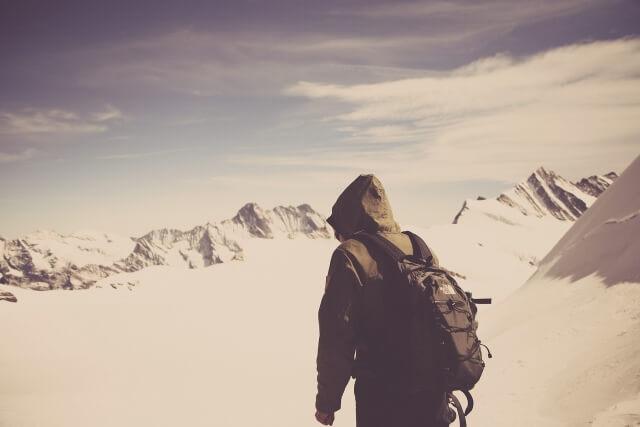
Finally, top it off with a waterproof and windproof outer shell, like sealing a cozy cocoon. This layering strategy is like adjusting your layers of bedding for the perfect night’s sleep.
Be mindful of your activity level to prevent overheating – when you’re on the move, your body generates heat, so you might need to shed layers temporarily. It’s like opening a window to let in a cool breeze when the room gets stuffy.
Keep extremities like your hands, feet, and head warm, as they’re more susceptible to cold. Think of them as the drafty corners of a room that need extra attention. By mastering the art of temperature regulation, you’re not just a hiker – you’re a temperature conductor, orchestrating your body’s harmony with the cold and ensuring a comfortable and enjoyable journey through wintry landscapes.
Seek Adequate Shelter and Shade
Seeking adequate shelter and shade is like finding heaven in the midst of nature’s elements. In scorching heat, it’s crucial to take refuge from the sun’s relentless rays. Think of it as finding a cool oasis amidst a desert. Look for shaded spots like trees, rock formations, or even your own tent – these become your sanctuaries, providing relief from the sun’s intensity. In the cold, shelter shields you from biting winds and icy precipitation. It’s like finding a cozy nook where you’re shielded from the chill.
Create shade using your gear – hoist a tarp or use a wide-brimmed hat to create your personal shady retreat. It’s like crafting your own mini-umbrella to escape the sun’s direct glare. Prioritize staying dry in the cold to prevent heat loss – dampness increases the risk of hypothermia.

It’s like keeping moisture out to maintain a comfortable environment. By seeking shelter and shade, you’re not just a hiker – you’re a weather navigator, finding your way to pockets of comfort amidst the extremes, ensuring you can pause, recharge, and continue your adventure with renewed energy and vigor.
Adjust Hiking Plans in Extreme Weather
Adjusting your hiking plans in extreme weather is like being a flexible conductor, adapting your route to the changing symphony of nature. When scorching heat intensifies, it’s essential to modify your itinerary. Think of it as choosing a cooler path through the composition. Opt for early morning or late afternoon hikes, avoiding the peak heat of the day. It’s like selecting the perfect tempo for your outdoor performance.
In freezing cold, adjusting your plans means factoring in shorter daylight hours. Consider shorter routes or allow extra time for your journey. It’s like changing the pace to match the rhythm of winter. Stay informed about weather forecasts and trail conditions, adjusting your plans accordingly. It’s like fine-tuning your performance to the weather’s cues.
By adapting your hiking plans, you’re not just a hiker – you’re a versatile artist, seamlessly blending your journey with nature’s ebb and flow, ensuring a safe and fulfilling exploration of the great outdoors, no matter the weather’s whims.
Navigate Challenging Terrain in Extreme Conditions
Navigating challenging terrain in extreme conditions is like embarking on an intricate dance with the landscape’s unpredictable rhythms. In scorching heat, rocky trails and exposed areas become more demanding. Think of it as mastering a graceful tango with the elements.
Take frequent breaks in shaded spots, balancing exertion and rest like choreographing your steps. In cold conditions, icy or snowy paths add an element of unpredictability. It’s like waltzing through a winter wonderland, carefully choosing each step.
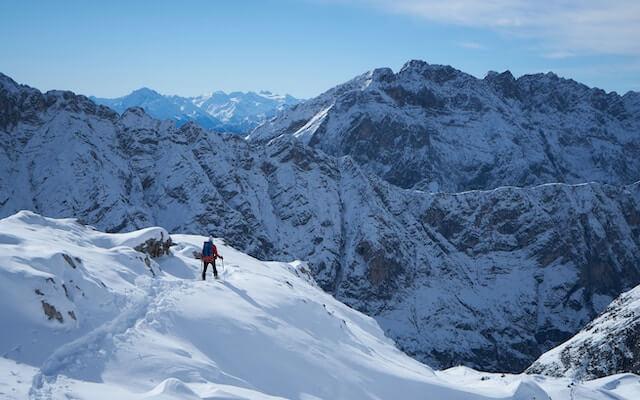
Use trekking poles for stability on uneven ground, providing support akin to partnering in dance. Traction devices like crampons or microspikes are your elegant ballet shoes, ensuring a secure grip on icy surfaces. By adapting your stride and technique, you become a seasoned dancer, moving harmoniously with the terrain’s challenges.
Remember that pacing yourself is key – it’s like keeping in tune with the rhythm, so you can dance your way through even the most demanding landscapes. By mastering the art of navigating challenging terrain, you’re not just a hiker – you’re a trail virtuoso, seamlessly maneuvering through obstacles and elevating your outdoor experience to a mesmerizing performance of skill and resilience.
Use Sun and Wind Protection
Using sun and wind protection is like arming yourself against nature’s elements. In scorching heat, shield with a hat, sunglasses, and sunscreen. Seek shade like finding refuge. In biting cold, layer windproof clothing and cover your skin to fend off the cold’s assault. Buffs or neck gaiters act as your shields. By using protection, you’re a weather warrior, ready to face nature head-on and ensure a safe, comfortable journey through extreme conditions.
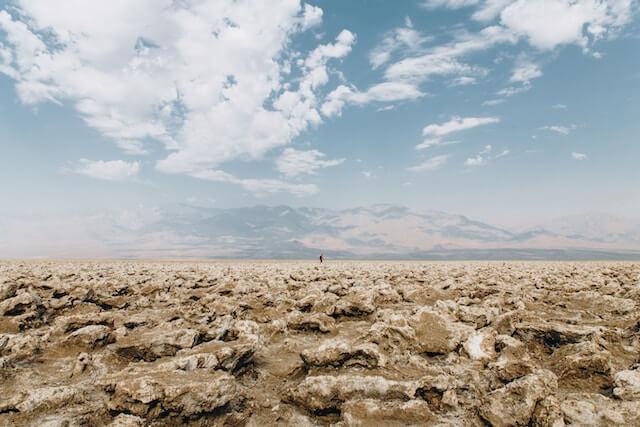
Build and Maintain a Fire in Cold Weather
Building and tending a fire in cold weather is like creating a life-saving refuge. In freezing conditions, fire offers warmth and comfort, a torch against the cold. Find shelter, gather dry materials, and use fire-starting tools to ignite your creation. Nurture the flames, like tending to a masterpiece, adding fuel with care. By mastering fire-building, you’re a maestro of survival, ensuring warmth and safety even in the harshest cold.
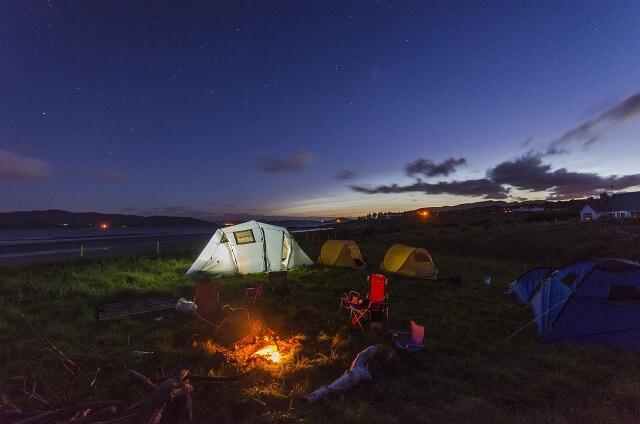
Interact with Wildlife During Extreme Weather
Interacting with wildlife during extreme weather is like stepping into their world while wearing a cloak of respect. In scorching heat, animals seek shade and conserve energy. Think of it as observing their natural rhythm. Keep a safe distance and avoid disturbing them – you’re like a curious guest, mindful not to intrude. In freezing cold, animals may be more elusive, conserving energy to survive. It’s like witnessing a secret ballot, respecting their need for solitude.
Stay quiet and observant, like a silent observer in the theater of nature. Avoid sudden movements that could startle wildlife – you’re like a whisperer, communicating through respectful silence. Remember, your presence is a privilege, a front-row seat to their world. By interacting thoughtfully, you’re not just a hiker – you’re a humble guest, sharing a fleeting moment with the wild inhabitants, fostering a connection that respects their space and preserves the magic of the natural realm.
Emergency Communication and Signal Devices
Emergency communication and signal devices are like lifelines connecting you to help in the wilderness’s vast expanse. In dire situations, they become your voice when words can’t reach you. Think of them as a beacon cutting through the silence, summoning assistance. Devices like satellite phones or personal locator beacons (PLBs) become your lifelines to civilization, ensuring that even in remote locations, you’re never truly alone.
Familiarize yourself with how to use these tools – it’s like learning a new language, a vital skill to bridge the gap in emergencies. Keep them easily accessible, like a secret treasure map you can quickly unveil. In distress, activate your signal device and wait for rescue, knowing that help is just a button away.

Conclusion
In the untamed realm of extreme weather, hiking becomes more than a simple journey – it transforms into a thrilling expedition of resilience and adaptation. Navigating scorching heat and bone-chilling cold is an art that requires careful preparation, heightened awareness, and a deep connection with nature. As we conclude our exploration of surviving in the wilderness’s most challenging conditions, remember that every step you take is a testament to your courage and resourcefulness.
From recognizing early signs of weather-related issues to mastering the dance of temperature regulation, you’ve discovered the tools to conquer the elements. Whether it’s seeking shelter, staying hydrated, or interacting with wildlife respectfully, your newfound knowledge empowers you to thrive amidst nature’s extremes. By embracing these insights and strategies, you’re not just a hiker – you’re a true adventurer, ready to embark on journeys that push boundaries and test limits.
So, as you embark on your next hiking expedition through the scorching heat or freezing cold, remember the lessons learned. Let the wilderness’s challenges become opportunities for growth, and let every experience further deepen your connection with the natural world.
As you face the elements head-on, may you find strength in the face of adversity, and may your adventures be etched with stories of triumph and survival. Stay curious, stay prepared, and most importantly, stay safe out there. Your journey is a testament to the unwavering spirit of exploration that resides within us all.









